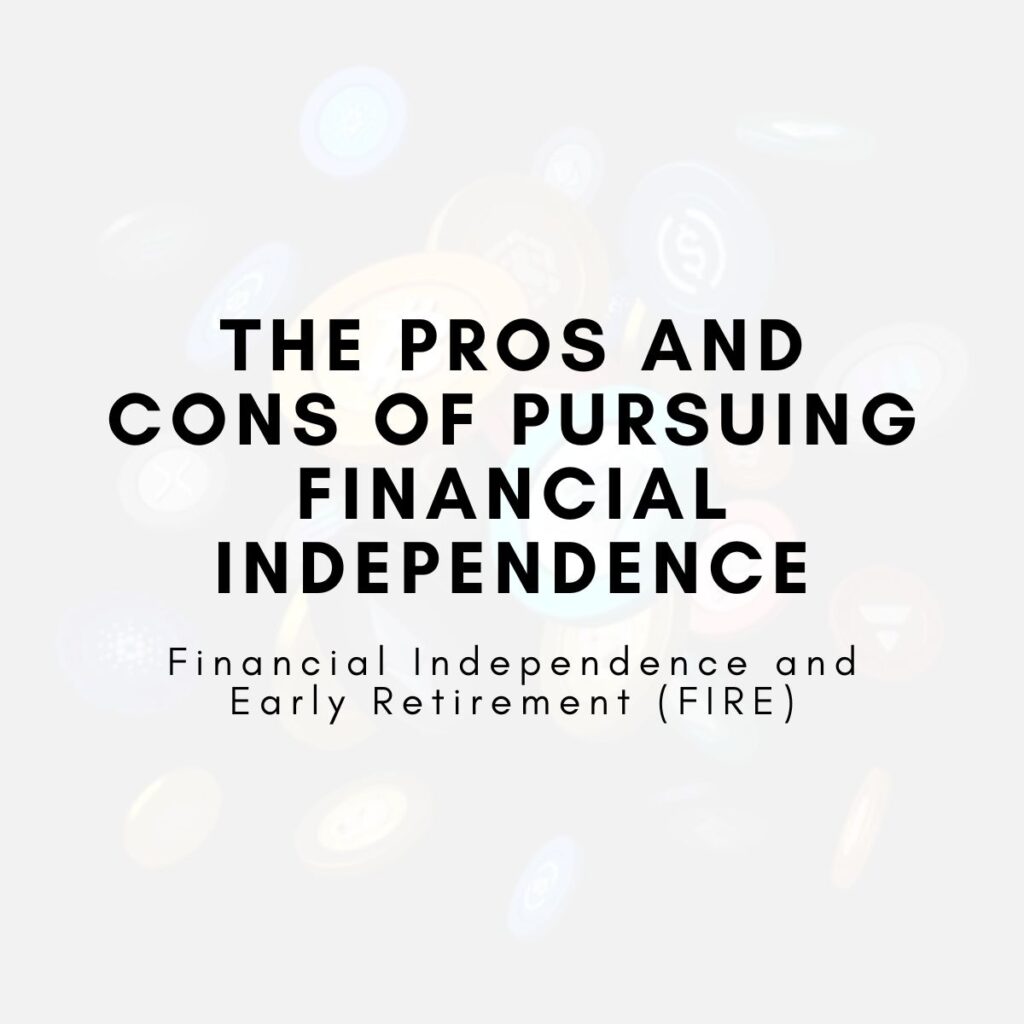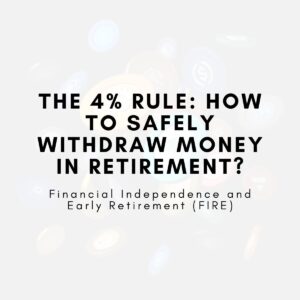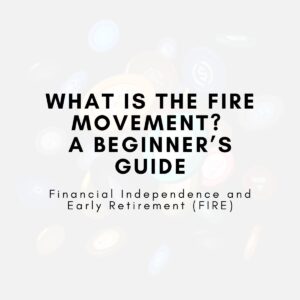
What are the pros and cons of pursuing financial independence (FI)?
Financial independence offers numerous benefits, such as the freedom to retire early, reduced financial stress, and greater control over your time. However, the journey towards FI comes with challenges, including the need for significant discipline, sacrifice, and the risk of burnout. Understanding the pros and cons can help you decide if FI is the right goal for you.
Summary Table: The Pros and Cons of Pursuing Financial Independence
| Section | Summary | Key Tips | Examples |
|---|---|---|---|
| The Pros of Pursuing Financial Independence | Highlights the benefits of FI, such as early retirement, freedom, and reduced financial stress. | Focus on long-term savings and investment goals. Consider the lifestyle and freedom FI can provide. | Sarah retired early at 40 with a growing portfolio. David found peace knowing he no longer relied on a job for income. |
| Early Retirement and Freedom | Reaching FI allows for the possibility of retiring early and living life on your own terms. | Save aggressively to reach FI faster and retire earlier. | Sarah retired at 40 after saving 50% of her income and investing wisely. |
| Reduced Financial Stress | Financial independence provides a sense of security and reduces anxiety about money. | Build a solid emergency fund and minimize debt. | David was able to retire early after growing his savings and investing in index funds. |
| Control Over Your Time | FI gives you the flexibility to choose how you spend your time, allowing for more leisure, hobbies, and family. | Pursue a lifestyle that aligns with your passions. | Laura pursued her passion for running a nonprofit after achieving FI. |
| The Cons of Pursuing Financial Independence | Discusses the challenges of pursuing FI, including sacrifices, burnout, and social pressure. | Be aware of lifestyle inflation and avoid burnout. Maintain a balance between work and personal life. | Alice sacrificed many luxuries for years, living frugally to reach FI by her 40s. |
| Sacrifices and Lifestyle Adjustments | Achieving FI requires significant sacrifices, such as cutting back on non-essential spending and living frugally. | Focus on cutting discretionary expenses without compromising overall happiness. | Tom skipped expensive dinners and social outings to save aggressively. |
| Social Pressure and Judgment | FI seekers may face judgment from friends and family who don’t understand their choice of frugality. | Set clear financial goals and stick to them, even when others don’t understand. | Rachel faced social pressure but stayed committed to her savings plan, reaching FI in her 40s. |
| The Risk of Burnout | The path to FI can be exhausting, requiring long work hours, stress, and personal sacrifices, which can lead to burnout. | Prioritize self-care, take breaks, and celebrate small wins along the way. | Rachel experienced burnout after working long hours to save aggressively for FI. |
| The Risk of Market Volatility | Financial independence heavily depends on investments, and market downturns can affect your ability to maintain FI. | Diversify investments and have a contingency plan for market fluctuations. | Mike saw his portfolio lose 25% during a market downturn but had contingency plans to protect his savings. |
| Balanced Approach to FI | Discusses how to balance frugality with enjoying life, taking mini-retirements, and making adjustments along the way. | Don’t wait until you’re fully financially independent to enjoy life—take breaks and enjoy mini-retirements. | Ethan traveled and worked part-time during mini-retirements, finding a balance between saving and enjoying life. |
| Conclusion | Achieving financial independence provides immense freedom, but it requires careful planning, sacrifices, and adjustments. | Balance aggressive saving with enjoying life. Build a plan that fits your goals and lifestyle. | FI was rewarding for John, who transitioned to a part-time teaching job, living the life he had always wanted. |
This table summarizes the post, highlighting both the pros and cons of pursuing financial independence. It offers insights into the benefits, such as early retirement and greater freedom, as well as the challenges, including sacrifices, social pressures, and market risks. Real-life examples illustrate how individuals have navigated their FI journeys and the strategies they used to achieve a balanced approach.
Introduction
In recent years, the concept of Financial Independence (FI) has gained significant traction, particularly among those seeking to retire early or gain more control over their lives. The Financial Independence, Retire Early (FIRE) movement encourages people to save aggressively, invest wisely, and live frugally to reach a point where they no longer have to rely on traditional employment to support their lifestyle.
While achieving financial independence can seem like the ultimate goal for many, it’s important to weigh the benefits against the potential downsides. This guide explores both the pros and cons of pursuing FI, helping you understand the challenges and rewards of this ambitious financial goal.
The Pros of Pursuing Financial Independence
1. Early Retirement and Freedom
One of the most significant benefits of achieving financial independence is the ability to retire early. By saving aggressively and living below your means, you can accumulate enough wealth to live off of without relying on a traditional job.
Example: Retiring at 40
Sarah worked in corporate law for 15 years and, through disciplined saving and investing, achieved FI by the time she was 40. By then, her portfolio was generating enough passive income that she no longer had to work full-time. She now enjoys traveling, pursuing hobbies, and spending more time with family.
2. Reduced Financial Stress
Achieving financial independence means you no longer have to worry about making ends meet. You can be less anxious about job security, unexpected expenses, or inflation. This reduced stress can lead to better mental health and overall well-being.
Example: Less Anxiety About Job Loss
David had always felt anxious about job security, especially during economic downturns. After achieving FI, he no longer had to worry about losing his job, as his investments provided enough to cover his living expenses.
3. Control Over Your Time
One of the most attractive aspects of financial independence is the ability to control how you spend your time. No longer bound by the 9-to-5 grind, you can prioritize activities that matter most to you, whether that’s pursuing a passion project, volunteering, or spending time with loved ones.
Example: Pursuing Passion Projects
Laura was able to leave her corporate job and dedicate her time to running a nonprofit that helps underprivileged children. Financial independence gave her the time and resources to focus on this cause without worrying about earning a paycheck.
4. Greater Flexibility in Career Choices
When you no longer rely on a job to pay your bills, you have the freedom to pursue a career that aligns with your passions, even if it doesn’t pay as much. Whether it’s starting a business, working part-time, or moving into a completely different field, financial independence gives you the flexibility to choose.
Example: Transitioning to a Dream Job
John was able to leave his high-paying but stressful job in finance and switch to teaching at a local university. His savings from years of frugality allowed him to take a pay cut without affecting his lifestyle.
The Cons of Pursuing Financial Independence
1. Sacrifices and Lifestyle Adjustments
Achieving financial independence requires making sacrifices along the way. This often means living well below your means, which can be difficult in a society that encourages consumerism. You may have to cut back on luxuries like travel, dining out, or purchasing expensive items.
Example: Living Frugally for Years
Alice spent several years living in a small apartment, driving an old car, and cutting back on vacations in order to save aggressively. While this helped her reach FI in her 40s, the sacrifices were challenging and sometimes led to feelings of deprivation.
2. Social Pressure and Judgment
Living a frugal lifestyle while others are spending freely can lead to social isolation or judgment. Friends and family may not understand your decision to prioritize savings over lifestyle upgrades, and this can lead to awkward conversations or even strained relationships.
Example: Pressure from Friends
Tom often felt uncomfortable when friends invited him to expensive dinners or events. His decision to skip these outings in favor of saving for FI sometimes led to misunderstandings and hurt feelings.
3. The Risk of Burnout
The intense focus required to save aggressively for financial independence can lead to burnout. Working long hours at high-paying but stressful jobs while trying to maintain a frugal lifestyle can create a feeling of exhaustion and dissatisfaction, even if it is ultimately for a greater goal.
Example: Burnout from Overworking
Rachel worked 70-hour weeks as a consultant to accelerate her savings, but after five years, she found herself mentally and physically drained. While her financial situation improved, her quality of life took a hit.
4. Potential for Uncertainty and Market Risk
Financial independence relies heavily on investments, such as stocks, bonds, and real estate, which are subject to market volatility. A sudden downturn could potentially affect your ability to sustain your lifestyle without a steady income.
Example: Market Downturn Affecting Savings
Mike had a large portion of his savings invested in stocks. During a market downturn, his portfolio lost 25% of its value. While he had other assets, the downturn made him reconsider his timeline for retirement.
Finding Balance: How to Achieve Financial Independence Without the Extremes
1. Creating a Balanced Savings Strategy
While the path to financial independence often requires aggressive saving, it’s important to balance frugality with enjoying life in the present. Find a middle ground where you can enjoy the benefits of your current lifestyle without sacrificing too much for the future.
Example: Saving Without Sacrificing Happiness
Samantha set a goal to save 50% of her income but also prioritized spending on experiences like vacations and hobbies. She found that by budgeting wisely, she could enjoy both financial independence and a fulfilling lifestyle.
2. Taking Mini-Retirements Along the Way
Rather than waiting until you’ve reached full financial independence, consider taking “mini-retirements”—periodic breaks from work to recharge and pursue passions. This allows you to enjoy life while continuing to work toward your long-term goals.
Example: Traveling During Mini-Retirements
Ethan took six-month breaks every few years, traveling to different countries while maintaining part-time work. These breaks allowed him to pursue his passion for travel without sacrificing his FI goal.
Conclusion
Pursuing financial independence is a rewarding journey, but it’s not without its challenges. The freedom to retire early, reduce financial stress, and gain control over your time are some of the most compelling reasons to strive for FI. However, it’s essential to be aware of the potential sacrifices, social pressures, and risks that come with the pursuit of this goal.
By striking a balance between saving aggressively and enjoying life along the way, you can make the pursuit of financial independence both realistic and fulfilling. Whether you aim for a minimalist approach to FI or a more flexible path, the rewards of financial freedom are worth the effort.
Key Takeaways
- Pros of FI: Early retirement, reduced financial stress, control over time, and career flexibility.
- Cons of FI: Sacrifices, social pressure, burnout, and market risks.
- Balanced Approach: Saving aggressively while enjoying life and taking mini-retirements can help you find fulfillment on the path to FI.
- Financial Independence Can Be Achieved by: Focusing on a high savings rate, investing wisely, and maintaining financial discipline.




